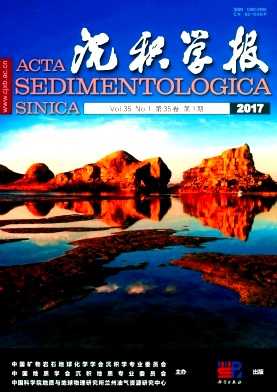Characteristics of Oxygen Isotopic Compositions of Quartz in the Badain Jaran Desert and Its Implications for Sand Provenances
doi: 10.14027/j.cnki.cjxb.2017.01.007
- Received Date: 2016-02-01
- Rev Recd Date: 2016-04-24
- Publish Date: 2017-02-10
-
Key words:
- Badain Jaran Desert /
- sand provenance /
- Quartz /
- oxygen isotopic compositions
Abstract: Badain Jaran Desert is the second largest area of shifting sands in China and features the tallest dunes on Earth. Identifying provenance of aeolian deposits in the Badain Jaran Desert is critical to understand the formation and development of mega-dunes. Quartz is the most common mineral of Chinese desert sediments, and oxygen isotopic composition of quartz has been regarded as a useful tracer of provenance. Oxygen isotopic compositions were measured by isotopic techniques in various size fractions of quartz, which were extracted from aeolian and lacustrine sediments collected on northwestern, eastern, and southeastern part in the Badain Jaran Desert. The results indicate that the δ18O values increase with decreasing grain size in quartz from aeolian and lacustrine sediments, and the δ18O composition of quartz in various size fractions has notable variations ranging from 3.1‰ to 9.9‰. The δ18O values in quartz in all size fractions are between 9.4‰ and 19.3‰, in which aeolian sands range from 9.5‰ to 16.6‰, and lacustrine sediments vary from 9.4‰ to 19.3‰. In the study area, the δ18O values of fine-grained (<16 μm) quartz show significant differences between different size fractions of the grains (i.e., 16~64 μm,125~154 μm, 200~250 μm, >300 μm), whereas two coarser fractions (200~250 μm and >300 μm) exhibit no significantly different in the δ18O values. Furthermore, when isotopic results are compared with available findings at regional scale, the δ18O values of fine-grained (<16 μm) quartz have no significant difference between Badain Jaran Desert, Qaidam Basin Desert, and Mongolian Gobi Desert, but that of silt-grained (16~64 μm) quartz exist notable difference between the Badain Jaran Desert and Mongolian Gobi Desert. From these observations, it appears likely that the fine-grained components in each sample probably have a more distal origin. A large range of δ18O values, from 9.4‰ to 19.3‰ is present within the aeolian dune and lacustrine sediments, fall within the range of values considered to be indicative of igneous, metamorphic, and sedimentary rocks. The variable δ18O values seem to result from the mixing ratio of igneous, sedimentary and metamorphic rocks. These differences in δ18O values can be related to regional geological setting, mixing ratio of various detrital components, and grain size dependence so on. In the dominant size fraction (125~154 μm, 200~250 μm) of sediments in Badain Jaran Desert, δ18O values are mostly between 11.0 ‰ and 14.9‰, but extend down to 9.4‰. It suggests that quartz detritus is mostly derived from sedimentary and metamorphic rocks, which is considered as mostly originating from Qilian Shan mountainous areas although the local source cannot be ruled out.
| Citation: | FU XuDong. Characteristics of Oxygen Isotopic Compositions of Quartz in the Badain Jaran Desert and Its Implications for Sand Provenances[J]. Acta Sedimentologica Sinica, 2017, 35(1): 67-74. doi: 10.14027/j.cnki.cjxb.2017.01.007 |






 DownLoad:
DownLoad: